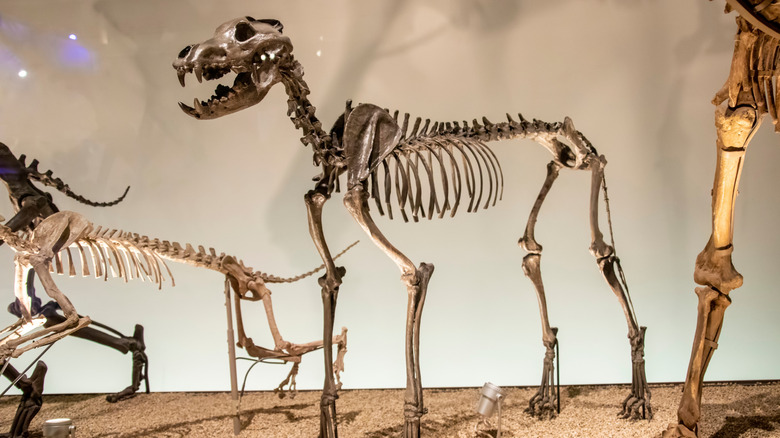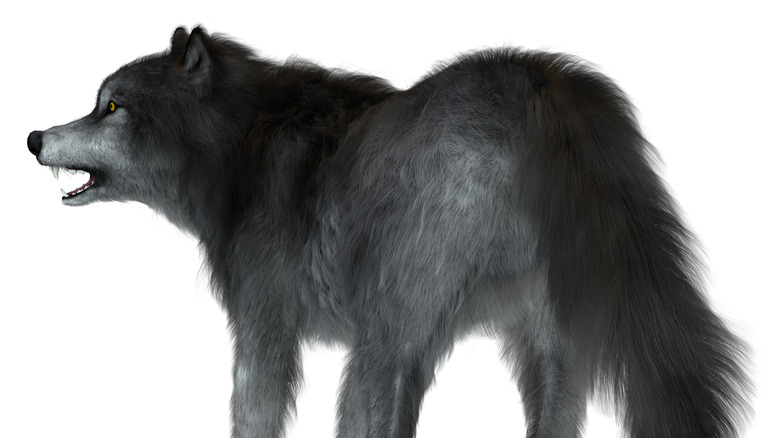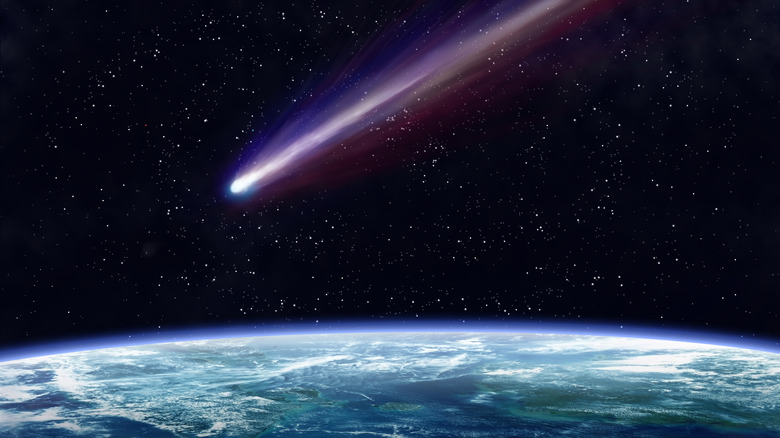Tragic Theories For Why The Dire Wolf Went Extinct
For nearly 5 million years dire wolves and their ancestors were one of North and South America's most successful apex predators. They could take down massive mammoths and large Ice Age bison and roamed across a sprawling range that included mountain forests and grassland, stretching from present day Southern Canada down to Bolivia. They could weigh up to 150 pounds and had larger, more muscular bodies and bigger jaws compared to gray wolves. But then something changed.
Scientists have come up with various theories for why the dire wolf went extinct around 13,000 years ago, perhaps in as short a time span as between 100 and 1,000 years, at the end of the last ice age. Among the possibilities are that they were unable to adapt to a changing climate and suffered the loss of the large herbivores they preyed on. Another theory holds that humans, vying for the same large animals as the dire wolf outperformed the canines and over-hunted their food source into extinction. There's even a theory that a comet or asteroid hit North America close to 13,000 years ago and may have triggered weather changes and a die-off of dire wolves and other creatures like North American lions and mammoths.
Climate change and the dire wolf's inability to adapt
At the end of the Pleistocene Epoch, the Earth's fifth known and last ice age, there was a dramatic climate shift with resulting changes that would have impacted the dire wolf, mainly through its major food sources. As the landscape changed, grasslands began to disappear, along with mammoths, camels, and Ice Age bison. Because the dire wolf specialized in hunting these larger animals, and it wasn't as agile as the gray wolf, which it coexisted with, that was able to catch smaller, faster prey, like hares, and thus survive into modern times.
Still, many scientists believe humans may have played a major role in the dire wolf's extinction. Human hunters coming from Eurasia would have had a distinctive advantage over other predators since large herbivores wouldn't have had a natural fear of humans as they did to the dire wolf, who over-hunted the animals to extinction. Yet there may have been another human-driven problem that helped kill off the dire wolf: fire.
According to the University of Oregon, A 2023 study determined that wildfires — possibly started by humans — in an environment made ripe for configurations due to the changing climate, wiped out the dire wolves and other large mammals like the saber-toothed tiger in Southern California, which had a large dire wolf population as proven by the thousands of dire wolf fossils that have been found at Los Angeles' La Brea Tar Pits.
Could a comet have killed off the dire wolf?
The wildfire study dovetails somewhat with the most common hypothesis for the dire wolf's extinction. Many scientists believe it was a combination of the animals' inability to adapt to new conditions along with human competition for the same food sources that spelled its doom.
There's still another theory about this ancient animal's demise. It's called the Younger Dryas Impact Hypothesis. The Younger Dryas was a period at the end of the Pleistocene Epoch from around 12,900 and 11,600 years ago in which an abrupt climate shift disrupted the warming trend and caused plunging temperatures in North America. Some scientists have theorized that an asteroid or comet hit the earth, kicked off the Younger Dryas, and killed off the dire wolf, along with its food sources.
Whatever the cause, the dire wolf, or at least a close proximity, is back. Unlike the aurochs, a type of large wild cattle that went extinct in the 17th century because of humans, which scientists have recreated using back breeding, the new dire wolves from Colossal Biosciences were genetically engineered. But don't expect to see these massive wolves roaming the countryside in packs. So far there are only three and they live in captivity in a secret location.


